Microsoft Nearly Doubles IO/s Using Seagate Exos HDD With MACH.2 Dual-Actuator
Technology also embraced by Toshiba and WD.
This is a Press Release edited by StorageNewsletter.com on December 9, 2019 at 1:43 pm![]() By John Paulsen, editorial chief, global content marketing, on blog of Seagate
By John Paulsen, editorial chief, global content marketing, on blog of Seagate
The Seagate Technology plc ‘s Exos 2X14 enterprise HDD features MACH.2 dual-actuator technology.
The Exos 2X14 enterprise HDD is the first to integrate Seagate’s MACH.2 multi-actuator technology, and is being tested by customers now for data center deployments. MACH.2 has demonstrated its benefits over single-actuator drives for many applications including content delivery networks (CDNs), video streaming, mail servers, backup/shuttle services, Hadoop, cloud applications.
Microsoft Corp. is anticipating success with Exos 2X14 enterprise HDDs with MACH.2 technology. The goal: maintain the IO/s required for some of its cloud services including Azure and the Exchange Online email service, while increasing available storage capacity per data-center slot. With early tests completed, MACH.2 has demonstrated that it achieves the anticipated benefits for high-IO/s workloads.
Microsoft tests Seagate Exos 2X14 with MACH.2 dual-actuator technology
Microsoft has completed its initial round of functional deployment testing of the Exos 2X14, including full infrastructure testing for interoperability and compatibility with the data center infrastructure, robustness, reliability and ease of integration with its Project Olympus system architecture – as well as the tests on the performance increase MACH.2 provides, which is an advantage IT architects are looking for.
Microsoft partner architect Aaron Ogus has worked directly with Seagate from the time our MACH.2 technology was in early development, with an eye to deploy the technology for the Microsoft Cloud space.
“We did a lot of early testing on Exos 2X14 engineering development units and have now tested out Seagate’s Exos 2X14 CTUs (early production customer test units), and based upon that analysis we’ve found we are getting close to twice the throughput and IO/s, which are the improvements we expected to achieve with the MACH.2 technology,” he says.
To evaluate the capabilities of the MACH.2 drives, Microsoft has been using proven tools such as its Exchange Server Jetstress tool, which simulates Exchange 2013 and Exchange 2016 disk I/O load on a server to verify the performance and stability of a disk subsystem. It has tested sequential throughput (simulating backup operations or streaming) and random read IO/s testing (simulating hyperscale and CDN workloads) among others.
“We’ve been simulating workloads for some time,” says Ogus, “And as Seagate’s MACH.2 technology development has progressed, we’ve partnered with Seagate to make sure the performance MACH.2 delivers meets our business requirements. The goal has been to achieve close to two times the throughput compared to the single-actuator drives currently deployed, and our tests show MACH.2 has delivered that goal.“
MACH.2 solves cloud data center needs like IO/s-per-terabyte and cost-per-terabyte
Click to enlarge
Cloud customers deploy large fleets of 3.5-inch HDDs in their data centers and manage their application storage nodes across multiple devices, spread across multiple racks. In order to meet their SLAs, these cloud customers need to achieve a certain level of performance, measured in IO/s and command latency, across the deployed HDD storage capacity. This required performance is characterized as IO/s/TB at a particular latency.
Data center architects also look at enterprise SSDs as one way to provide high IO/s. That can make sense depending on the balance of various needs for each application including capacity requirements, IO/s, throughput, environmental costs like cooling, and cost. But with their lower cost-per-terabyte and higher capacities, HDDs provide the most effective storage tier for leveraging capacity – if the HDDs can provide the necessary IO/s.
Seagate MACH.2 technology addresses the IO/s/TB challenge by using two actuators that can transfer IO/s independent of each other within a single HDD, creating parallelism within a single HDD that enables up to double the performance. Within a drive, the top half of the R/W heads are addressed by one actuator, while the bottom half of the heads are addressed by a second actuator. Each actuator addresses one half the total capacity of the drive.
How MACH.2 benefits Microsoft’s Exchange server architecture
In every cloud data center, floor space is at a premium – and for many applications cloud providers are trying to get more IO/s out of the same slot.
MACH.2 drives will be deployed in support all of Microsoft’s CSP services including Azure and Exchange – the breadth of applications sharing floor space means it’s at a premium. Microsoft wants to minimize slot costs, which is a function of floor space, power, and cooling among other things. When a customer finds IO/s trending down on the types of drives installed, they have to look at other avenues such as adding dual-actuator HDDs.
Microsoft’s Exchange architecture is constantly tuned to maximize server throughput. MACH.2 technology will allow Exchange to continue deploying larger and larger HDDs while maintaining SLAs for latency. This new platform is allowing Microsoft to deploy higher capacity drives like the 14TB Seagate 2X14, as’s MACH.2 technology lets them get the throughput they need to support Exchange at that capacity.
MACH.2 prevents ‘stranded capacity’
Click to enlarge
As long as a particular HDD device meets or exceeds the threshold IO/s/TB as required by the customer, all of the capacity on the HDD can be utilized. If the IO/s/TB on an HDD drops below a defined threshold based on application workloads, the customer cannot utilize all of the drive capacity with the targeted workload – a problem known as ‘stranded capacity.’
James Borden, cloud product manager, Seagate, explains the dilemma posed by stranded capacity: “As HDDs get increasingly higher in capacity, up until now the ability to transfer data faster has not advanced commensurately. Without multi-actuator technology, once you exceed a certain capacity you’re no longer able to deliver the expected QoS, because you’re limited by each drive’s maximum throughput.
“For example, in order to maintain the expected QoS, a 16TB drive requires twice the maximum throughput capability of an 8TB drive. As your application starts to exceed the maximum IO/s capability of a storage device, the only way to solve that is to put less data on the device – and that equates to stranded capacity.
“One partial solution to the wasted capacity is to use a ‘short stroke’ strategy. You put a subset of your data on the outer diameter of a drive, and use the internal diameter to store less important data that doesn’t need to be delivered with the same quality-of-service metric. In that way, at least you won’t have a HDD that’s only two-thirds full. But short stroking still makes data management more complex, and you can’t be certain you’ll always have full utilization of your installed capacity.“
But when deploying Exos 2X14 drives with MACH.2, short stroking is no longer necessary. A data center can install a 14TB dual-actuator drive in each slot. To the application, it looks very similar to the high throughput provided by two 7TB drives – but it fits into a single slot.
MACH.2 technology developed with Microsoft specifically to meet CSP goals
The design and features of first Exos 2X14 dual-actuator HDDs respond to customers’ needs. Microsoft has been a close collaborative partner during the entire development and subsequent rollout of MACH.2 multi-actuator technology.
“We’ve been working with Microsoft in their data centers as our MACH.2 development progressed; they’ve been very supportive, from the initial conception on,” says Chris Hensley, global sales lead for cloud applications, Seagate. “Our MACH.2 multi-actuator architecture has evolved along with our ongoing conversations with Microsoft about how to solve what they defined as the IO/s-per-terabyte issue.“
“Microsoft has been at our side every step of the way, and we’ve involved them in every part of the process, and benefited from their insights all the way from very early drive samples,” Borden agrees. “Microsoft worked with us early in the architecture of this device to make sure what we were envisioning was something they could actually deploy,” says Borden. “That has been key to developing the first iteration of the MACH.2 architecture, using dual LUNs with SAS – which fits Microsoft’s data center architecture and reasonably reflects what other large CSPs may do.“
As the Exos 2X14 dual-actuator HDD program moves forward and expands, the drive family will be available in multiple flavors and SKUs to accommodate a full profile of enterprise use cases.
Resources:
Blog: Seagate MACH.2 Multi Actuator Technology Breaks Throughput Record; HAMR Reliability Tests Exceed Industry Standards
Blog: Seagate Shows Dual-Actuator Speed Gains in Real-World Setup
Blog: Multi Actuator Technology: A New Performance Breakthrough
Read also:
OCP Summit: Seagate MACH.2 Multi Actuator Technology With Throughput Record
480MB/s
March 27, 2018 | Press Release
WD Black HDDs Expanded to 6TB at $294
7,200rpm, 128MB cache, dual stage actuator, 6Gb SATA, dual processor
August 26, 2015 | Press Release
WD Expands Desktop 7,200rpm 6Gb SATA HDD To 4TB
With dual processor and actuator, $339 MSRP
November 21, 2012 | Press Release
Dual Stage Actuator HDDs Appear on WD SATA HDDs
A technical report from Tom Coughlin
September 25, 2009 | In Brief
WD Shipping First 2TB HDD at 7,200rpm (With Dual Actuator)
Including one model with 1.2 million hours MTBF and 64MB cache [with our comments]
September 1, 2009 | Press Release








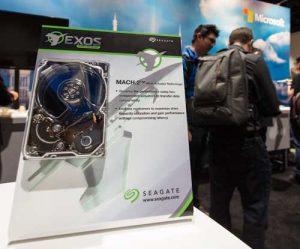
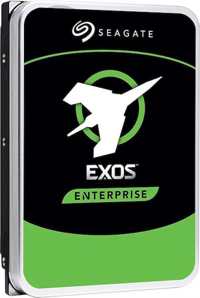
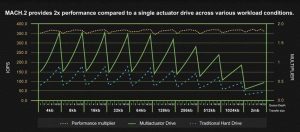
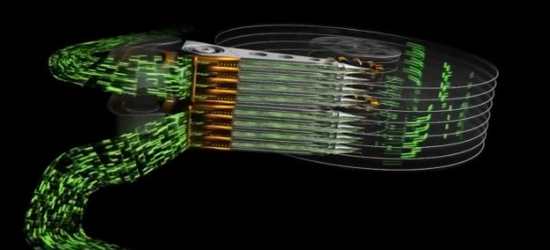
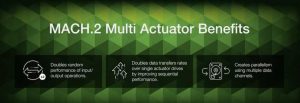
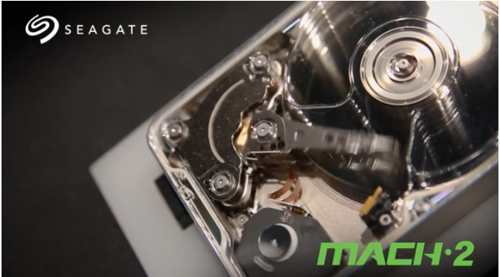




 Subscribe to our free daily newsletter
Subscribe to our free daily newsletter
